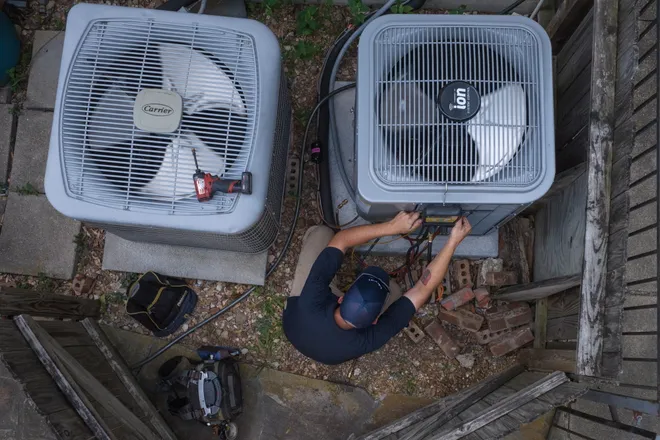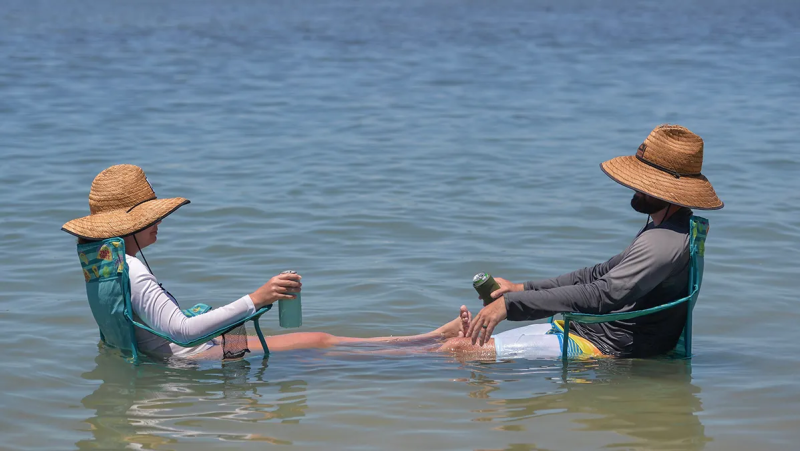The cost of staying cool: How extreme heat is costing Americans more than ever
- Extreme heat is the leading cause of weather-related deaths in the U.S., with more than 1,220 people succumbing to high temperatures every year.
- In 2021, more than 2.5 billion hours of labor were lost due to heat exposure in the U.S. agriculture, construction, manufacturing, and service sectors.
- The average cost of electricity bills in the summer has increased by 51% from $476 in 2014 to an estimated $719 in 2024.
From California to New England, millions of Americans across the country are taking refuge from oppressive heat.
More than 160 million people in the West, Southeast, Mid-Atlantic and parts of New England are living under a heat alert as record high temperatures are being broken. For much of the U.S., this summer's forecast will keep residents under the comforting, cool stream of their air-conditioning units.
But staying comfortable during harsh summers comes at an increasingly steep cost for consumers. In-unit air conditioning can rack up the electricity bill, forcing some families to choose between food and protection from the heat.
These are the hidden costs of staying cool during heat waves:

Excessive heat causes widespread damage
Extreme heat is the leading cause of weather-related deaths in the U.S., with more than 1,220 people succumbing to high temperatures every year, according to the U.S. Centers for Disease Control and Prevention.
Extreme heat has significant economic consequences, as well. In 2021, more than 2.5 billion hours of labor were lost due to heat exposure in the U.S. agriculture, construction, manufacturing, and service sectors.
In California, where temperatures have broken the 100-degree mark this week, excessive heat has cost the state billions.
A recent report from the California Department of Insurance tallies the total economic loss from extreme heat events in the past decade. Between 2013 and 2022, extreme heat cost the state $7.7 billion in lost wages, decreased productivity, agricultural and manufacturing disruptions, power outages, and damages to infrastructure.
A separate report from the Center for American Progress found that health care costs from extreme heat amount to an estimated $1 billion every summer. With prolonged periods of excessive heat during summer months, the rate of heat-related illnesses rose. This resulted in more emergency department visits and admissions to hospitals, according to the report.
"Extrapolated nationally, heat event days would be responsible for almost 235,000 emergency department visits and more than 56,000 hospital admissions for heat-related or heat-adjacent illness, adding approximately $1 billion in health care costs each summer," the report stated.
The cost of cooling your home during the summer
The average cost of electricity bills in the summer has increased by 51% from $476 in 2014 to an estimated $719 in 2024, according to the National Energy Assistance Directors Association, which represents state governments in federal programs to help low-income families pay water, heating, and cooling bills.
This summer, electricity bills are expected to total $719 each month from June through September. That average is up from $661 over the same four-month stretch last year, according to the National Energy Assistance Directors Association and the Center for Energy Poverty, and Climate.
Low-income families who can least afford higher bills will be hit hardest, Mark Wolfe, executive director of the National Energy Assistance Directors Association, told USA TODAY last month.
“The dangers of extreme heat leave low-income families at heightened risk, due to lack of access to affordable summer cooling, increasing electric costs and cutbacks in funding” of federal aid programs, Wolfe said.

Staying cool during a heat wave without air conditioning
Some cities and regions of the U.S. are still ill-prepared for heat waves.
In the Pacific Northwest and the Bay Area, for instance, cities haven't historically had to plan for extreme heat because they haven't often broken 90 degrees. As a result, cities like Seattle, Portland and San Francisco have low rates of in-home air conditioning units, leaving many residents to struggle during ever-increasing heat waves driven by climate change.
If you live somewhere without air conditioning, experts recommend opening your windows at night and closing them before the afternoon heats up.
Typically, the peak hours when most areas see the hottest weather is from 1 p.m. to 6 p.m. That's when it's most important to try to keep cool, even if that means finding refuge in a business or restaurant or carrying around a fan or spray bottle to cool off.
Fred Campbell, a professor at the University of Texas Health Science Center in San Antonio, previously told USA TODAY that having multiple fans directly blowing on you can make a big difference when it comes to regulating your temperature. This is especially helpful for older Americans and young children who can't regulate their temperature as well.
Disclaimer: The copyright of this article belongs to the original author. Reposting this article is solely for the purpose of information dissemination and does not constitute any investment advice. If there is any infringement, please contact us immediately. We will make corrections or deletions as necessary. Thank you.







